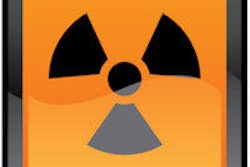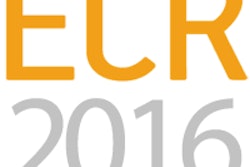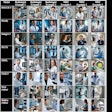
Radiologic technologists who perform fluoroscopically guided interventional procedures appear to be at increased risk for a variety of cancers -- specifically, more than twofold for brain cancer -- according to a new study published online in the American Journal of Roentgenology.
The findings suggest that there's work to be done to better protect technologists, researchers from the U.S. National Cancer Institute wrote.
"Because the brain is unprotected by thyroid shields, lead goggles, or lead aprons, doses to the head are likely to be higher than those to other anatomic sites on radiologic technologists," lead author Dr. Preetha Rajaraman and colleagues noted (AJR, March 21, 2016).
Long-term tracking
Fluoroscopically guided interventional procedures offer patients advances in medical treatment of common diseases, such as cardiovascular conditions, and over the past two decades the use of fluoroscopy intervention has grown, according to Rajaraman's team. Interventional radiology procedures increased by more than 10% per year on average between 1992 and 2001; in 2006, 17 million fluoroscopically guided interventional exams were performed in the U.S., and more than a fourth were for cardiac applications.
But the negative effect of radiation doses that such interventional procedures confer on the staff who perform them has not yet been thoroughly studied.
"Our specific objective was to examine whether cancer incidence and mortality of selected cancers are elevated among radiologic technologists who perform or assist with fluoroscopically guided interventional procedures in comparison with other radiologic technologists," the study authors wrote.
Rajaraman's group used data from the U.S. Radiologic Technologists Study, a collaboration between the National Cancer Institute, the University of Minnesota, and the American Registry of Radiologic Technologists (ARRT). The study includes a nationwide cohort of more than 146,000 radiologic technologists certified after 1981; the cohort is followed through yearly ARRT recertification records. The records of those who have died are linked with the National Death Index.
Two questionnaires administered between two periods, 1983 to 1989 and 1994 to 1998, collected information about technologists' employment, disease risk factors, history of personal diagnostic or therapeutic imaging procedures, and diagnoses of specific types of cancer.
Between 1994 and 1998, 72% of living technologists completed the survey, which included information on whether they performed fluoroscopically guided interventional procedures. This data was used for Rajaraman's study, as well as follow-up survey data from 2003 and 2005 to track cancer incidence and follow-up survey data from 2008 to track cancer mortality (causes of death were taken from the National Death Index). Unfortunately, the survey data did not include detailed information on radiation doses associated with performing these procedures, Rajaraman's group said.
The researchers' data analysis found a twofold increased risk of brain cancer mortality, as well as a modest increased incidence of melanoma and breast cancer -- but not mortality -- among technologists who performed fluoroscopically guided interventional procedures compared with those who did not. There was no elevated risk of cancers of the thyroid, skin other than melanoma, prostate, lung, colon, or rectum.
Hazard ratios for cancer incidence and mortality in radiologic technologists who performed fluoroscopically guided interventional procedures compared with those who did not are as follows, with a figure above 1.0 indicating elevated risk:
| Cancer risk among RTs performing interventional fluoroscopy | ||
| Type of cancer | Incidence hazard ratio | Mortality hazard ratio |
| All cancers (except nonmelanoma skin cancer) | 1.07 | 1.03 |
| Brain cancer | -- | 2.16 |
| Female breast cancer | 1.18 | 1.10 |
| Melanoma | 1.32 | 0.66 |
Because the data used in the study did not include specific radiation exposure measures, more research must be done to confirm the findings, since other factors besides radiation could contribute to increased cancer risk among technologists, according to the study authors.
"Our findings must be confirmed in future epidemiologic studies of technologists and physicians performing fluoroscopically guided interventional procedures, ideally incorporating detailed individual radiation dose to clarify the risks of a broad range of cancers," the team wrote.
In any case, can the patient benefit from fluoroscopically guided interventional procedures be balanced against technologists' increased cancer risk? Yes, according to Rajaraman and colleagues.
"The immense patient benefit provided by [these procedures] is indisputable, and the risks that we observed for brain cancer, breast cancer, and melanoma among technologists who reported working with these procedures should be interpreted in that context," the researchers concluded. "Patients should continue to undergo medically necessary imaging examinations, but healthcare providers should keep radiation exposure as low as reasonably achievable without compromising essential diagnostic information."




















